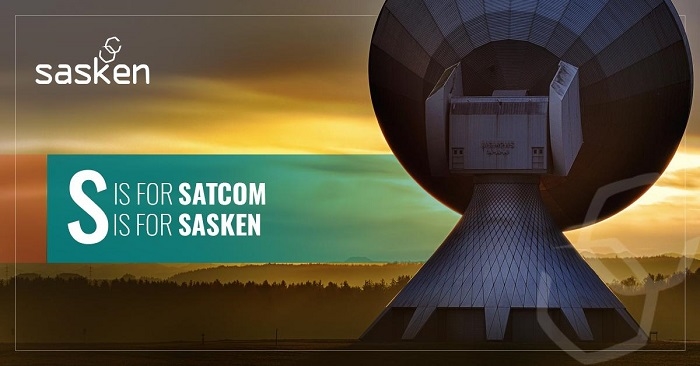
everythingRF Interviewed Ashwin Ramachandra, VP and Head, Product Engineering Services, Sasken Technologies Limited to discuss their involvement in the Satellite Communication Segment.
Q. Can you tell us more about Sasken's involvement in the Satellite Communications Segment? How long have you been involved in this sector? What are some projects/products that you have worked on?

Ashwin Ramachandra: Sasken is a leader in providing engineering R&D services to the communication segment as well as in private networks such as Satellite, Public Safety, and Railways. Sasken has been working in the Satellite Communications space since 2001 where we began by working on migrating 3GPP UMTS to satellite standards. Since then, we have worked on 2G, 3G and 4G, and end-to-end products/terminals design and development in the Satellite Communication space. We have worked at various stages of the programs such as:
- Specification development by migrating 3GPP standard to Satellite standard
- Conceptualization and end-to-end development of tracking device, handheld phone and terminal development based on 2G/3G/4G satellite standards like GSM over Satellite, UMTS over satellite and LTE over satellite
Q. Can you tell us more about Sasken’s project on the development of the end-to-end satellite phone? What it entailed, the challenges you faced and how long it took from concept to a final product?

Ashwin Ramachandra: Sasken licensed its application framework and GSM stack to the customer and also agreed to build out a complete stack complying with Satellite standards. Our customer further enhanced the scope of engagement to take ownership of end-to-end handset development including hardware, industry design & mechanics, and antenna.
Usage of satellite communication in India without approval is not permitted. However, the agreement with our customer states that we needed to design and develop the complete terminal, including testing and validation. The work on the hardware was carried out in our Sasken Finland office and the software was developed in India. In order to be able to test the software on the hardware, we needed to import the hardware to India, hence needed an import license which required a Wireless Planning Commission (WPC) license. Given the valid security concerns, getting the WPC license for the satellite segment is a huge challenge but we were able to overcome this. These licenses are granted for a short period of time and need to be revised every half year/every year.
Q. What are the cyber security measures and controls that need to be taken in to account when developing an end-end satellite phone?
Ashwin Ramachandra: The issues with security are the same as the ones encountered in terrestrial communication. Cyber security is very important in satellite communication as even a day without GPS satellites creates turbulence across many segments such as Finance, Telecommunication, Transportation, and Emergency and Defence services. Cyber security is needed at the device level, network node level, and the space component level for the system to be self-protected. Hence, every node is required to be managed with commercial and public keys for encryptions.
Q. Can you tell us how ICT has enabled breakthrough technologies in satellite communications?
Ashwin Ramachandra: Overall ICT is bringing a lot of dynamics and proven methodologies to the table in the satellite communication space. It is very hard to experiment over space systems in this segment; there is a need for proven methodologies which are reliable, sustainable and can be maintained for over 10 to 15 years. ICT is adding huge value to the Satellite system with LTE over Satellite, IoT over Satellite, and Connected Car over Satellite which are all derived from terrestrial technologies.
Q. What are some technological challenges faced by service providers during the development of Satcom Products? How does Sasken help companies address these issues?
Ashwin Ramachandra: At the beginning, technologies in the satellite communication space were proprietary and built from the scratch. These technologies are very challenging to maintain as the capabilities are not available in terms of human resources, custom hardware components, and custom interfaces. Today, satellite technologies are adopting proven 3GPP technologies with minor variance to meet the satellite latencies and services. These adoptions are making the satellite technology to migrate while being backward compatible on the air interface. Further, the core network components can be re-used from terrestrial segments, apart from air interface technology, the remaining components/nodes are re-usable as is. Sasken’s extensive expertise in 3GPP technology makes us a partner of choice to satellite operators, system developers or integrators.
Q. What are some interesting applications which can be better implemented (in terms of cost, performance, infrastructure requirements or capability) using Satellite Communication Technology over conventional wireless technologies?
Ashwin Ramachandra: There are two segments of satellite communication i.e. Mobile Satellite Services (MSS) and VSAT services. MSS is still built on proprietary technologies and adopts 3GPP technologies. This eventually increases the cost of the terminals/ground stations as they need to be custom built for each requirement. In VSAT, DBV-S/S2/S2 modem technology is built and used by every VSAT service provider. The differentiator is how the services are offered and how the billing platforms/development platforms are offered to the end users. Similarly, MSS also needs to adopt some technologies which are used by satellite service providers. This would eventually drive down the cost of terminals.
Further, IoT has interesting applications in the Satellite segment. Far flung areas have assets that need to be monitored. The cellular coverage may be weak to non-existent in these areas. Enabling IoT on Satellite technologies is a way to solve these issues.
Q. In your view how have advancements in wireless communications and 5G/LTE technologies transformed businesses while increasing efficiency?
Ashwin Ramachandra: 4G/4.5G technologies of 3GPP are adding high value to satellite communications as they are creating new business segments e.g., LEO constellation based satellite communication. Terrestrial chipsets are used as is in Satellite with minor modifications to the software only. As terrestrial communication advances towards 5G to meet very high data speeds (1GBPS minimum), it will eventually meet the primary requirement of satellite communications. 5G New Radio (NR) is planning to address satellite communication requirements too. This objective drives seamless data transfer between terrestrial NR and satellite NR.